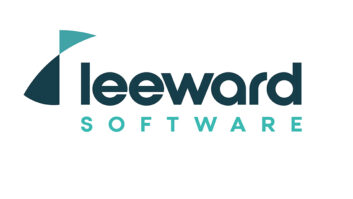Great ideas do not have to be new in order to be useful — novelty is not important unless you are in the advertising business.
In fact, good ideas take time to mature. Musical instruments took centuries to refine, and composers took generations to learn how to use these new instruments. If an idea has been around for decades, it has passed the test of time. Some novel concepts are actually repackaged versions of old trusted veterans.
One of my favorite business tools has been around for more than half a century. It is a business analysis technique with the acronym of SWOT, which stands for Strengths, Weaknesses, Opportunities and Threats.
I am introducing the tool now because it also has value when used by an individual to manage a career. In the current world of economic uncertainty and shifting paradigms, all of us are concerned with our careers in order to pay the mortgage and to send our kids to college.
I will return to a discussion of SWOT after I have argued that all of us have become one-person businesses. Borrowing business tools for managing individual careers is a cheap way to gain an advantage.
YOU’RE ON YOUR OWN
Every employee actually is running a business.
To appreciate this conclusion, let’s take a quick review of employment history beginning in the mid 20th century. At that time, employees were viewed as loyal servants and companies as paternalistic feudal rulers.
When I received my college degree in 1964, the conventional wisdom was that one should get a general education with good grades. The company that hired you would then invest two years in training you to be productive. Employees were expected to stay with their sponsoring company for decades, and companies expected to keep employees until they retired. Twenty-year-old students were told about generous pensions that would be provided 50 years later.
These students and employers were getting married.
In the ensuing half-century, employees have become functional objects to be hired and fired based on their contribution to the bottom line.
People, like computers, are used and discarded unless they retain their value. Companies now are routinely merged, reorganized, downsized, restructured; business models shift like sands in a hurricane. Having been an active professional for some 40 years, I am acutely aware that our relationship to organizations now is very different.
At one time, the distinction between employee and contractor was large and apparent to all. That distinction now remains only in regard to a few components of the legal system. The difference shows up mostly in the taxation system and default laws, which serve as a hidden contract.
Companies are now less concerned with whether you are a W2 (employee) or 1099 (contractor/consultant). At one time, the implied distinction was permanent or temporary, but the distinction disappeared with the widespread use of temporary employees. To some degree, this describes all of us. You can quit your job or be fired with little notice because the legal default is being an employee-at-will. While companies may have rules that provide a more secure relationship to their employees, they are not legally obligated to maintain them.
Some high-powered executives write their own employment agreements with protective clauses, including buyouts in case of forced termination. Such agreements are a form of business contract. While every employee connects to his or her employer with some kind of explicit or implicit contract, most employees are oblivious to the terms.
The point of this discussion is that you are a one-person business relating to your company by virtue of a contract: You provide services and you receive payment for that which you delivered. This is not very different from buying an automobile.
THINK LIKE A BUSINESS

iStockphoto/Chad McDermott
In my consulting business, I viewed myself both as a CEO and an employee. What task would I (the CEO) assign to myself (the employee)? Everyone should learn to think like this if they want to be proactive in managing their career. Those who have trouble finding a new job after being terminated often start their own businesses. At one time, it was the exception, but no longer.
Because we are each a one-person business, we should be using business tools to manage our careers.
I am now ready to return to the SWOT business tool as applied to each of us.
When examining the components of SWOT, we would be wise to make career decisions based on the interplay between these four. For example, Strengths and Weaknesses are properties of you, while Threats and Opportunities focus on your relationship to the world. Ultimately, the goal is look for Opportunities that draw on your Strengths while avoiding your Weaknesses and Threats. To make such choices, you must know your particular SWOT.
To illustrate the analysis process, I will take myself as an example. You should make a similar list. But be forewarned, dishonesty only serves to fool you. Sometimes a friend or colleague is useful as a dialog partner. Businesses often bring in outside consultants to help the process because they are more objective.
Strengths are those asset attributes that have value. They may be specific technical skills or broad general abilities. Anything that makes you a valuable commodity can be viewed as a Strength. In my case, I have good communications skills, a refined sense of pattern recognition, the ability to build engineering teams and good understanding of many technologies.
Do not forget to include those strengths that exist outside of your current job description. You might teach in a religious school because you have good mentoring skills and a charismatic personality. You might have a good knowledge of computer networking because you maintain the computer system in your parent’s assisted living facility. You may have discovered that you make a good negotiator when settling arguments in your sports club. These, too, are part of your Strength inventory.
Weaknesses are those liability attributes that undermine your value. In my case, I do a terrible job on those activities that involve a large quantity of details, which I never remember. I tend to draw inferences with very little data to support conclusions. I do not like situations that have high risk even if the payoff is potentially large. Because I love diversity, I cannot focus on a single project to the exclusion of all else. I am uncomfortable in a reactive situation where I do not know what is coming next.
Often Weaknesses and Strengths come in pairs, for example concrete vs. abstract. When being concrete is a Strength, the inability to be abstract becomes a Weakness, and vice versa.
Opportunities are situations that the world presents to you. Over my career, I have noticed opportunities that completely changed my career. The most dramatic example happened when I was a junior professor at the age of 27. I was playing video games on our research computer at 3 a.m. when a colleague, Francis Lee, wandered into the laboratory. He was an expert on computer memories, and I was an expert on analog audio signal processing. We took the opportunity to discuss the relationship between digital and analog. As a result of this discussion, we recognized that the time was right for digital audio. We conceived of a first product, a digital audio delay, and we started down the path that led to the creation of Lexicon. We were pioneers in what became a massive industry.
These Last Word articles were also the result of an unexpected opportunity. I was having lunch with Michael LeClair, who had recently been offered the chance to manage Radio World Engineering Extra. We saw the opportunity for me to contribute my experience and perspectives in a column. It was an opportunity for both of us.
are aspects of the world that can undermine your success. I noticed my first career threat when I became an expert specializing in transistor amplifier design. I was good! But within a few years, integrated circuits could produce a much better amplifier than I could. My early career was threatened by a new technology that dramatically reduced my value as a business.
The Internet has already proved to be a threat to terrestrial broadcasting. Online purchasing has threatened local bookstores. The popularization of reality TV using volunteer performers is a threat to those who make their living as actors. Globalization is a threat to those who are part of the manufacturing sector. Free “want ad” listings on the Internet, such as Craigslist, are a threat to the revenues of traditional daily newspapers. A new piece of legislation can threaten a stable industry. Something can be both Threat and Opportunity. For some, the new health care legislation is a threat, for others, an opportunity.
MANAGE, ADAPT AND SUCCEED
The goal of this article is twofold. First, I want to convince you that you are a one-person business, and you should manage our career on that basis. You can borrow a large body of knowledge that businesses use in being successful. Individuals do not have to invent the wheel.
Second, I introduced the SWOT analysis technique as an example of one such tool that can be used by individuals. Since this is only an introduction, I suggest that you search the Web using such keywords as “SWOT analysis” to get more information about this technique. There are many other aspects of running a business that are just as relevant to planning a career.
There is a more general conclusion: Become proactive in your strategic planning rather than feeling like a helpless victim who depends on luck and dreams. All of us must adapt to the paradigm shifts that are happening. Many years ago, 19th century farmers discovered that ma-and-pa farms would no longer be economically viable. Periodically, the world experiences major paradigm transformations in which the old order decays and a new order replaces it. We are simply in the middle of one such paradigm shift. We do not choose our decade, but we can wisely adapt to it. New paradigms are both threats and opportunities.
Barry Blesser is director of engineering for 25-Seven Systems. Opinions are his own.












